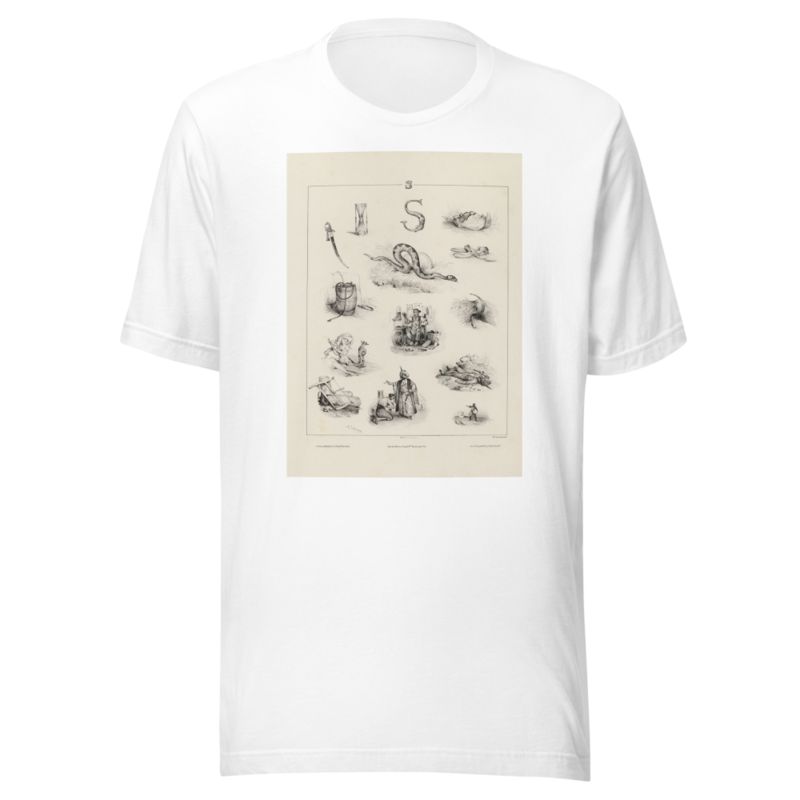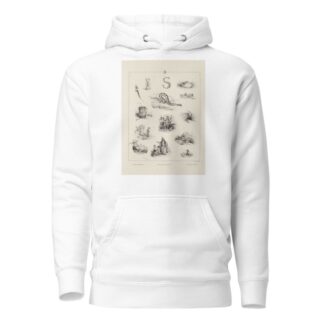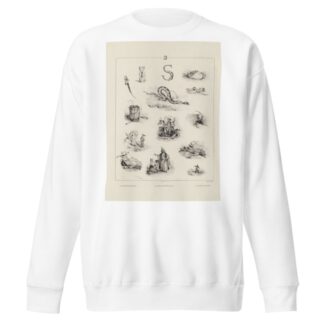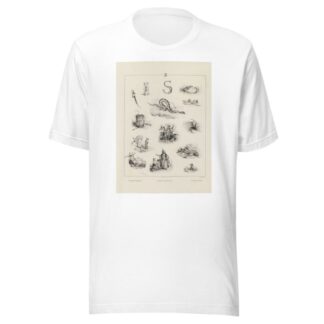Description
S by Victor Adam printed on a T-Shirt
About the T-Shirt
Regular fit
Standard length, the fabric easily gives into movement
Casual wear
A classic, everyday option loved by our customers
Side-seamed
Constructed by sewing two parts together, creating a fitted look
The Unisex Staple T-Shirt feels soft and light with just the right amount of stretch. It’s comfortable and flattering for all. We can’t compliment this shirt enough–it’s one of our crowd favorites, and it’s sure to be your next favorite too!
- Solid colors are 100% Airlume combed and ring-spun cotton
- Ash color is 99% combed and ring-spun cotton, 1% polyester
- Heather colors are 52% combed and ring-spun cotton, 48% polyester
- Athletic and Black Heather are 90% combed and ring-spun cotton, 10% polyester
- Heather Prism colors are 99% combed and ring-spun cotton, 1% polyester
- Fabric weight: 4.2 oz./yd.² (142 g/m²)
- Pre-shrunk fabric
- 30 singles
- Side-seamed construction
- Tear-away label
- Shoulder-to-shoulder taping
- Blank product sourced from Nicaragua, Mexico, Honduras, or the US
Victor Adam (1801-1866)
Jean Victor Adam was a French painter and lithographer.
Adam was born in Paris in 1801, the son of Jean Adam, an engraver. He studied at the École des Beaux-Arts in 1814–18, and also in the ateliers of Meynier and Régnault.
In 1819 he exhibited Herminia succouring Tancred. He was almost immediately afterwards employed to paint various subjects for the Museum at Versailles, including The Entry of the French into Mainz, The Battle of Varroux, The Taking of Menin, The Battle of Castiglione, The Passage of the Cluse, The Battle of Montebello and The Capitulation of Meiningen the last three in collaboration with Jean Alaux.
He continued to exhibit until 1838, his subjects including Henry IV., after the Battle of Coutras, Trait of Kindness in the Duke de Berri, The Postillion, The Vivandiere, The Road to Poissy, The Return from the Chase, Horse-fair at Caen, and many others. He then disappeared from public view until 1846, when he exhibited some lithographs, dedicating himself to the medium from then on. In this line he produced a lithographic album, Views in the Environs of Paris, Studies of Animals for an edition of Buffon, etc. He won a gold medal in 1824, a second class medal in 1836, besides several others from Lille, Douai, and other cities. He died at Viroflay in 1867.






Reviews
There are no reviews yet.